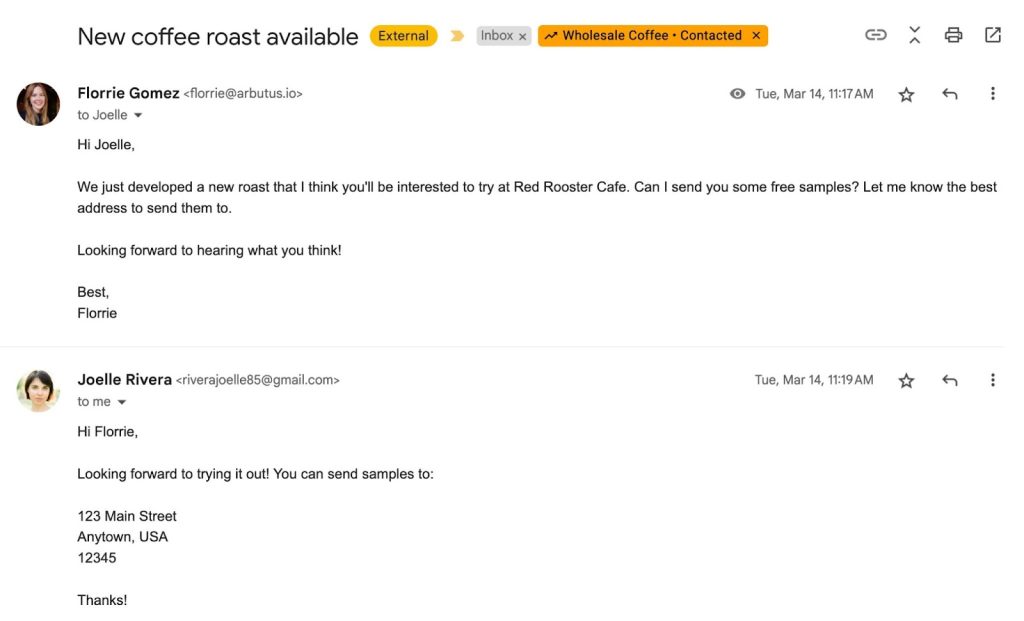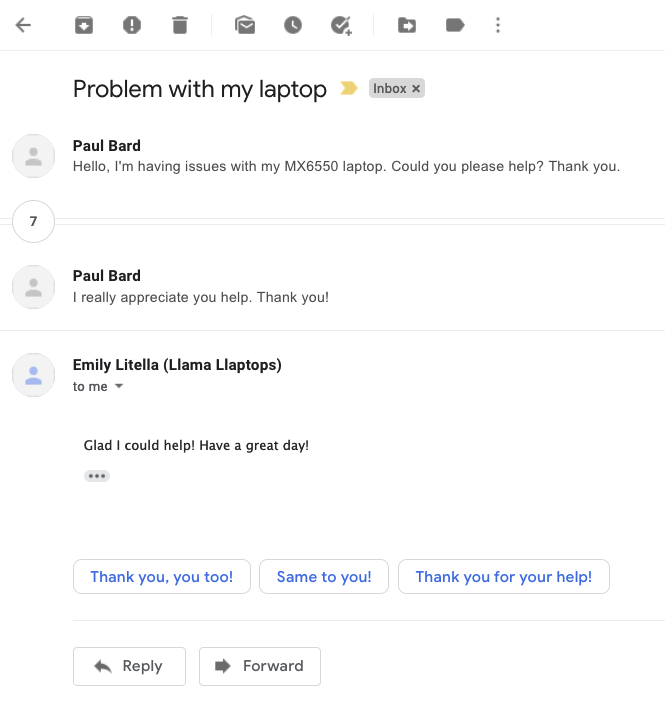Drowning in a sea of disjointed emails? You’re not alone. The modern inbox can feel like a chaotic maze, but mastering the art of email threads might just be your lifeline. An email thread—those connected conversations that keep all related messages neatly grouped—can be both a blessing and a curse.
Whether you’re a busy professional, a student, or anyone who deals with email (and who doesn’t?), managing these threads effectively is crucial. In this article, we’ll unveil seven best practices to help you navigate and tame your email threads like a pro. Ready to transform your email experience from frantic to fluid?
Let’s dive in and discover the strategies that will keep your inbox organized, your communications clear, and your sanity intact.
Key Takeaways:
- Email threads consolidate related messages, allowing for clear and organized tracking of conversations, reducing the need for back-and-forth emails.
- By grouping all relevant communications, email threads enhance teamwork, ensuring everyone stays informed and can contribute effectively to the discussion.
- Threads help declutter your inbox by consolidating related emails, making it easier to manage and prioritize important messages.
- Best practices for managing threads include using clear subject lines, avoiding repetition, deleting irrelevant messages, and adhering to organizational policies.
- Email threads provide a comprehensive view of discussions, aiding in reaching consensus by having all necessary information and viewpoints in one place.
Table of Contents
Email Thread Meaning
An email thread refers to a series of related email messages from more than one person that are connected by a common subject or topic. When someone replies to an email, their response is added to the existing thread, creating a chronological record of the conversation.
This allows for easy tracking and reference of previous messages and ensures that all relevant information is contained within a single thread.
Purpose of Email Threads

Email thread groups serve multiple purposes and offer several benefits in managing communication effectively. By understanding the purpose of email threads, you can optimize their usage to streamline communication, improve collaboration, and reduce email overload.
The primary purpose of email threads is to consolidate all relevant information in one place. By grouping related emails together, team members can easily follow the conversation and contribute their input. This streamlined approach enhances collaboration, allowing for efficient communication and teamwork.
Email threads also serve as a documentation tool, providing a clear record of discussions and decisions. With all separate messages contained within a single thread, it becomes easier to refer back to previous conversations, ensuring that important information is not lost or overlooked.
Another significant benefit of email threads is their ability to reduce email overload. By consolidating related messages, email threads help to declutter your inbox and make it easier to manage and prioritize incoming emails. This enables you to stay organized and focused on the most important tasks at hand.
5 Benefits of Email Threads
Email threads offer several benefits that contribute to improved communication and productivity.
| Benefit | Description |
|---|---|
| Improved Communication Efficiency | Email threads streamline communication by organizing discussions, reducing the need for multiple emails. |
| Enhanced Collaboration and Teamwork | Email threads promote collaboration by allowing easy contribution and ensuring everyone is informed. |
| Clear Documentation of Conversations | Email threads serve as a record of discussions, aiding reference, follow-up, and preserving decisions. |
| Reduction of Email Overload | Email threads consolidate related messages, reducing email overload and simplifying email management. |
| Facilitation of Decision Making | Email threads provide a comprehensive view of discussions, aiding in reaching consensus and decision-making. |
1. Improved Communication Efficiency
Email threads provide a clear and organized record of the conversation, reducing the need for back-and-forth emails. With all relevant information contained within the thread, you can easily track the progression of the discussion without searching through multiple irrelevant emails.
2. Enhanced Collaboration and Teamwork
Email threads facilitate collaboration among team members, allowing them to easily contribute their input and follow the discussion. By providing a centralized platform for communication, email threads promote teamwork and ensure that everyone is on the same page.
3. Clear Documentation of Conversations
Email threads serve as a documentation tool, ensuring that conversations and decisions are properly recorded. This not only helps in reference and follow-up but also provides a historical record of important discussions and agreements.
4. Reduction of Email Overload
By consolidating related messages, email threads help reduce email overload. Instead of receiving numerous separate emails on the same topic, you can find all relevant information within the thread, making it easier to manage and prioritize incoming emails.
5. Facilitation of Decision Making
Email threads provide a comprehensive view of the conversation, making it easier to reach consensus and make decisions. By having all relevant information and viewpoints in one place, you can consider different perspectives and come to an informed conclusion.
7 Best Practices for Managing Email Threads
When it comes to managing email threads, there are several best practices that can help you stay organized and improve communication efficiency.
By implementing these practices, you can effectively manage your email threads and ensure that important information is easily accessible. Let’s dive into these best practices:
| Best Practice | Description |
|---|---|
| Organize Effectively | Create folders or labels to group related email threads. |
| Clear Subject Lines | Use concise and descriptive subject lines to provide context. |
| Minimize Repetition | Avoid duplicating information or reiterating points. |
| Delete Irrelevant Messages | Regularly review and delete irrelevant or unnecessary messages. |
| Follow Thread Policies | Adhere to established thread policies or guidelines. |
| Use Proper Formatting | Organize messages with paragraphs, line breaks, and bullet points. |
| Respect Reply-All | Use “Reply-All” only when necessary and avoid unnecessary recipients. |
1. Organize Effectively
One of the key aspects of managing email threads is to organize them in a way that allows for easy navigation and reference. Create folders or labels to group related threads together, making it simpler to locate specific conversations when needed.
2. Clear Subject Lines
Using clear and concise subject lines is essential for providing context and aiding in the quick understanding of the email thread’s topic. Be specific and descriptive, so recipients can easily identify the subject matter without opening the email.
3. Minimize Repetition
Avoid unnecessary repetition in email responses within a thread. Before hitting send, review the previous messages to ensure you are not duplicating information or reiterating points that have already been addressed. This will help keep the thread concise and prevent confusion.
4. Delete Irrelevant Messages
To keep your email threads streamlined and clutter-free, regularly review and delete any irrelevant or unnecessary messages. Removing unnecessary content will make it easier to focus on the relevant information and maintain a clean thread.
5. Follow Thread Policies
If your organization has established thread policies or guidelines, it is important to follow them. These policies may involve specific formats, thread categorization, or response times. Adhering to these guidelines will ensure consistency and effective communication within your team or organization.
6. Use Proper Formatting
Proper formatting can greatly enhance the readability of your email threads. Use paragraphs, line breaks, and bullet points to organize your messages and highlight important information. This will improve comprehension and make it easier for recipients to follow the conversation.
7. Respect Reply-All
When replying to email threads, be mindful of the “Reply-All” function. Only use it when necessary, such as when your response is relevant and adds value to the entire thread. Avoid using “Reply-All” to include unnecessary recipients, as this can lead to email overload and unnecessary notifications.
Tips for Using Email Threads
When it comes to effectively using email threads, there are several tips that can help streamline your communication and maximize productivity.
By following these tips, you can make the most out of email threading features in your email clients and platforms, improve searchability and filtering of specific messages within a thread, leverage email tagging and labeling to categorize and prioritize threads, and incorporate other communication channels and tools, such as chat or project management platforms, when appropriate to streamline communication.
Let’s explore these tips in more detail below:
| Tips for Using Email Threads |
|---|
| Utilize email threading features |
| Use search and filtering tools |
| Implement email tagging and labeling |
| Incorporate other communication channels and tools |
- Utilize email threading features:Make use of the email threading features available in your email clients and platforms. These features automatically group related messages together, making it easier to follow the conversation. This allows for a more organized and efficient communication experience.
- Use search and filtering tools:Take advantage of search and filtering tools within email threads to quickly locate specific messages or information. This can save you time and help you find what you need without having to scroll through the entire thread.
- Implement email tagging and labeling:Use email tagging and labeling to categorize and prioritize your threads. This can help you easily identify important and complete threads, track progress on specific projects, and stay organized amidst a sea of emails.
- Incorporate other communication channels and tools:Consider incorporating other communication channels and tools, such as chat or project management platforms, alongside email threads. This can provide alternative avenues for collaboration, especially for quick exchanges or team discussions that may not require lengthy email threads.
How to Enable Threads in Email
Enabling and activating email threading may vary depending on the email client or platform you are using. To ensure that email threads are activated and visible, follow the general instructions below for popular email clients such as Gmail, Outlook, and Apple Mail.
Gmail:
- Open your Gmail account.
- Click on the gear icon in the top-right corner to access the settings menu.
- Select “Settings” from the dropdown menu.
- Navigate to the “Inbox” tab.
- Scroll down to the “Conversation view” section.
- Select the option that says “Enable conversation view”.
- Click on “Save Changes” at the bottom of the page to apply the settings.
Outlook:
- Open your Outlook account.
- Click on the gear icon in the top-right corner to access the settings menu.
- Select “View all Outlook settings” at the bottom of the dropdown menu.
- Navigate to the “Mail” tab.
- Select “Conversation view” from the options on the left side.
- Toggle the switch to turn on conversation view.
- Click on “Save” to apply the settings.
Apple Mail:
- Open Apple Mail on your device.
- In the menu bar, click on “Mail” and select “Preferences”.
- Go to the “Viewing” tab.
- Check the box that says “Organize by thread”.
- Close the preferences window to apply the settings.
How to Add Other People to an Email Thread
Adding other people to an email thread is a simple process that can be done by including their email addresses in either the “To” or “CC” fields when composing a reply or forward. This allows you to expand the participants in the email conversation and ensure that everyone receives all relevant messages.
To add someone to an email thread:
- Open the email thread or click “Reply” or “Forward” in your email client.
- In the recipient field, enter the email addresses of the additional participants.
- If you want them to receive all future messages in the thread, add their addresses to the “To” field.
- If you want to include them for information purposes only, add their addresses to the “CC” (carbon copy) field.
- Compose your new message as usual and send it.
By following these steps, you can easily include others in an email thread, expanding the pool of participants and promoting effective collaboration.
How to Remove Other People in an Email Thread
If you need to exclude certain participants from an ongoing email thread, you can easily remove them by following a few simple steps:
- Open the email thread that you wish to modify.
- Locate the email addresses of the participants you want to remove.
- Delete the email addresses from the “To” or “CC” fields.
- Ensure that the individuals you removed are no longer included in the recipient list.
By removing the email addresses of specific participants, you can ensure that they will not receive any further messages in the same thread. This allows you to control the conversation and exclude individuals who are no longer relevant or necessary to the discussion.
Email Thread vs Email Chain
In the world of email communication, you may have come across the terms “email thread” and “email chain.” While they both refer to a series of related messages, there are subtle differences in their usage and meaning that are important to understand.
Let’s take a closer look at these two types of email conversations.
| Email Thread | Email Chain |
|---|---|
| Chronological sequence of emails | Forwarded or replied to without grouping |
| Common subject or topic | Multiple recipients being kept in the loop |
| Organized and easy to track previous messages | Lack of organization and tracking |
Email Thread: An email thread is a chronological sequence of emails that are connected by a common subject or topic. When someone replies to an email, their response is added to the existing thread, creating a conversation history.
In an email thread, all messages related to a specific topic are grouped together, allowing for easy tracking and reference of previous messages. It provides a streamlined and organized way of communication and ensures that all relevant information is contained in a single thread.
Email Chain: On the other hand, an email chain refers to a series of emails that are forwarded or replied to without being grouped together in a threaded format. In an email chain, each new email is typically a separate message that includes the original message as attachments or copied content.
Email chains are often used when multiple recipients need to be kept in the loop, but they do not offer the same level of organization and tracking as email threads. Without a threaded view, it can be harder to follow the flow of the conversation and locate specific information.
Example of an Email Thread
To provide a clear illustration of how an email thread functions, let’s examine a sample email thread and analyze its components.
This example will showcase how replies are added, the structure and flow of the conversation, and how the thread is formed.
Subject: Planning Meeting for Project XYZ
| Sender | Date | Message |
|---|---|---|
| Alice | March 1, 2022 9:00 AM | Hi everyone, let’s schedule a planning meeting for Project XYZ. Are you available on Tuesday or Wednesday next week? |
| Bob | March 1, 2022 10:30 AM | Tuesday works best for me. How about 2:00 PM? |
| Alice | March 1, 2022 11:15 AM | 2:00 PM on Tuesday works for me too. Let’s confirm with the rest of the team. |
| Charlie | March 1, 2022 11:30 AM | I’m available on Tuesday as well. 2:00 PM works for me. |
| David | March 1, 2022 1:00 PM | I have a conflicting meeting at 2:00 PM on Tuesday. Can we reschedule? |
| Alice | March 1, 2022 1:30 PM | David, let’s find an alternative time that works for everyone. I will check and get back to you shortly. |
In this email thread example, the subject line clearly indicates the topic of discussion, which is a planning meeting for Project XYZ. The thread begins with Alice initiating the conversation, suggesting possible meeting dates. Bob, Charlie, and David respond with their availability and suggestions.
As the thread progresses, Alice acknowledges the availability of team members and addresses conflicting schedules, indicating a willingness to find an alternative time. The email thread continues to evolve as participants reply and provide updates.
Example of Email Thread in Gmail

Conclusion
In conclusion, mastering email threads is essential for anyone navigating a crowded inbox. By implementing the seven best practices discussed, such as using clear subject lines, organizing effectively, minimizing repetition, and respecting reply-all, you can transform chaotic email communication into a streamlined and efficient process.
These strategies not only declutter your inbox but also enhance teamwork and decision-making by keeping all relevant information in one place.
Author’s Bio:
Scott McAuley is the CEO of TMG Voice. Great teamwork starts with TMG Voice, where all your people, tools, and communication come together for faster and more flexible work.
We offer unparalleled phone service with EPIC support from real humans, no long-term contracts, and the lowest prices with the greatest features. Experience seamless, cost-effective, and personalized telecommunications solutions tailored to your business’s unique needs.
For more information about TMG Voice’s Business Communication services, visit our Plans and Pricing page or contact us using our hotline (832) 862-6900. You can also visit our office at 21175 Tomball Parkway #361 Houston, Texas 77070, or send a message to our email through our Contact Us page.
Master Email Threading for Better Communication
Curious about managing long email threads? Gain practical insights in our blogs and visit TMGVoice for solutions that bring clarity to your email exchanges.
Begin refining your inbox now!
FAQ
Which is Correct, Email Thread or Email Trail?
The correct term is “email thread,” which refers to a series of related email messages grouped together in a conversation.
How do you Email a Thread?
To email a thread, you can forward the entire conversation, including all previous messages, to another recipient or group of recipients using your email client’s forwarding feature.
What is Another Name for an Email Thread?
Another name for an email thread is an “email conversation” or “email exchange,” all of which refer to a sequence of messages linked by replies and forwards.
Why Should Email Threads be Used?
Email threads should be used to maintain context, continuity, and organization in email communications, allowing recipients to follow the conversation’s progression and easily reference previous messages within the thread.



